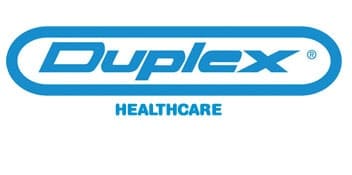FREE WHITEPAPER: Steam & Microfibre in Healthcare
In the intricate realm of healthcare, patient care goes beyond the confines of surgical precision and medical expertise. It extends to the very environment in which this care is administered. Terminal cleaning, a crucial facet of infection prevention, plays a pivotal role in safeguarding patients, healthcare professionals, and the integrity of medical facilities. In this comprehensive guide, we will delve into the nuances of terminal cleaning in hospitals and explore ways to enhance this vital practice.
The audio version of the blog
Terminal Cleaning in Hospital- An Overview
Commonly also known as discharge cleaning, this is the ultimate stage in maintaining a sterile and safe healthcare environment. It encompasses a set of rigorous procedures aimed at cleaning and disinfecting patient care areas once a patient has been discharged. The primary goal is to eradicate any residual pathogens, ensuring that the environment is immaculate for the next occupant. This practice is a linchpin of infection control within healthcare facilities.

Image by Andrea Piacquadio
The Role of Terminal Cleaning in Hospital
Discharge cleaning serves several vital purposes within the healthcare setting:
Infection Prevention: The primary objective is to prevent the spread of infections. By eliminating potentially harmful microorganisms, the risk of healthcare-associated infections (HAIs) is significantlyreduced.
Patient Safety: Patients, especially those with compromised immune systems, rely on a clean and sterile environment for their recovery. Discharge cleaning directly contributes to patient safety and recovery.
Healthcare Professional Safety: Healthcare workers are exposed to a variety of pathogens daily. A meticulously cleaned environment helps protect the safety of medical practitioners.
Maintaining Facility Integrity: Medical facilities must adhere to strict cleanliness standards for accreditation and reputation. Effective discharge cleaning upholds the integrity and reputation of the facility.
General Environmental Cleaning Techniques
General Patient Areas
Maintaining a hygienic environment is paramount in general patient areas. Regular cleaning, which includes dusting, wiping, and mopping, should be carried out diligently. Surfaces like bedrails, doorknobs, and light switches are breeding grounds for pathogens and should receive special attention.
Outpatient Wards
Outpatient wards, where patients come and go frequently, require a robust cleaning regimen. Frequent disinfection of waiting areas, examination rooms, and shared equipment is crucial to prevent the spread of infections.
Routine Cleaning of Inpatient Wards
Routine or regular ward cleaning is the foundation of infection control. Daily disinfection, waste disposal, and linen management are vital aspects of this process.
Terminal or Discharge Cleaning of Inpatient Wards
Once a patient is discharged, cleaning becomes imperative. Deep cleaning of the entire room, including all surfaces, fixtures, and equipment, is essential. Adequate time and attention should be dedicated to this process to ensure a pristine environment for the next occupant.
Patient Area Toilets
Toilets in inpatient areas should be cleaned with hospital-grade disinfectants regularly. Adequate ventilation and proper waste disposal are key to maintaining hygiene in these spaces.
Operating Rooms
Operating rooms demand the highest standards of cleanliness. Strict protocols are in place to ensure the sterilisation of equipment and surfaces. Following WHO guidelines on decontamination and reprocessing of medical devices is imperative in these settings.

Operating Room Cleaning
Intensive Care Units
ICUs are hotspots for infections due to critically ill patients. A rigorous cleaning and disinfection regimen, including daily and discharge cleaning, is essential to prevent the spread of infections.
Emergency Department
Emergency departments are fast-paced environments with a high risk of contamination. Stringent infection management measures, including regular cleaning and disinfection, are crucial to protect both patients and healthcare providers.
Ways to Improve Terminal Cleaning in Hospitals
Discharge cleaning or environmental cleaning is an ongoing process that requires constant evaluation and improvement. Here are some strategies to enhance discharge cleaning effectiveness:
- Education and Training: Healthcare professionals should receive thorough training in discharge cleaning procedures, including the proper use of cleaning agents and equipment.
- Adherence to Guidelines: Strict adherence to cleaning protocols and guidelines provided by reputable sources like the World Health Organization (WHO) and the Centers for Disease Control and Prevention (CDC) is paramount. These guidelines are continuously updated to reflect the latest research and best practices.
- Use of Technology: Explore advanced cleaning technologies like Duplex Healthcare Floor and Steam Cleaning Machines, UV-C disinfection systems and ATP monitoring to supplement traditional cleaning methods.
- Regular Audits: Conduct regular audits and assessments of cleaning practices to identify areas for improvement.
Conclusion
Terminal cleaning is not merely a routine chore; it is a critical component of infection management in healthcare facilities. Healthcare professionals, hospitals, aged care facilities, rehabilitation centres, and home healthcare providers all play a pivotal role in ensuring the highest standards of cleanliness and hygiene. By following established guidelines, embracing innovation, and fostering a culture of excellence in cleaning, we can collectively safeguard the healthcare facility for the benefit of patients and practitioners alike.



